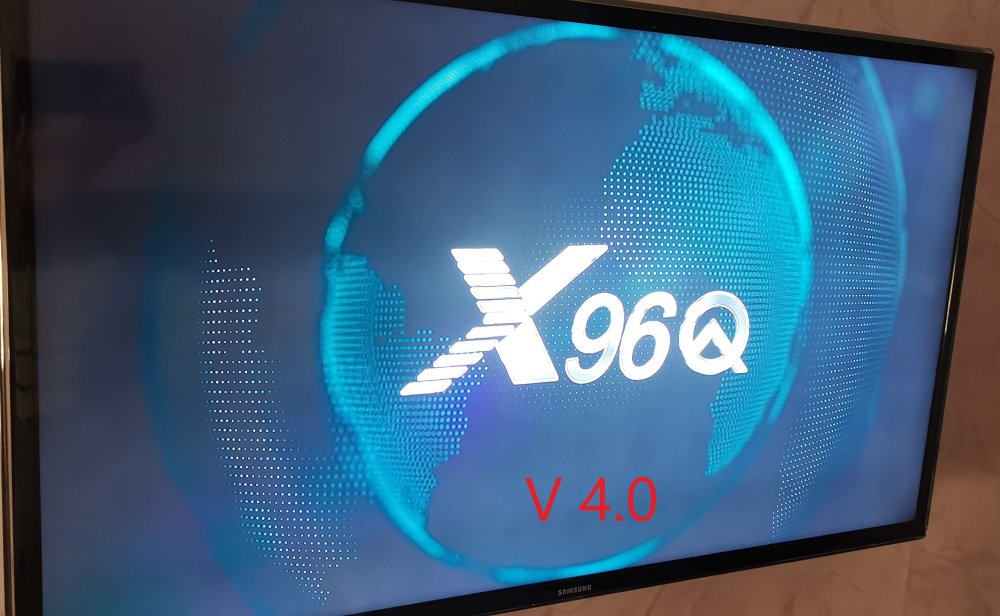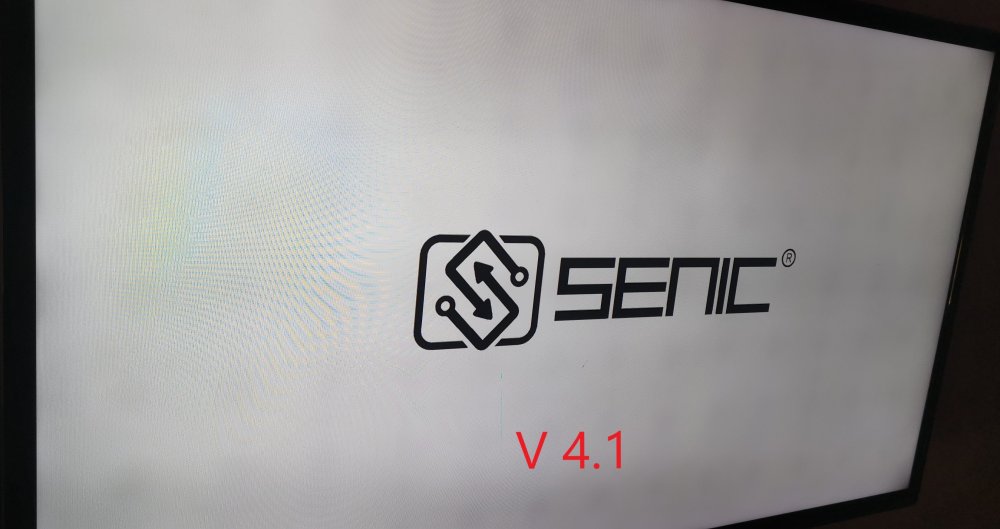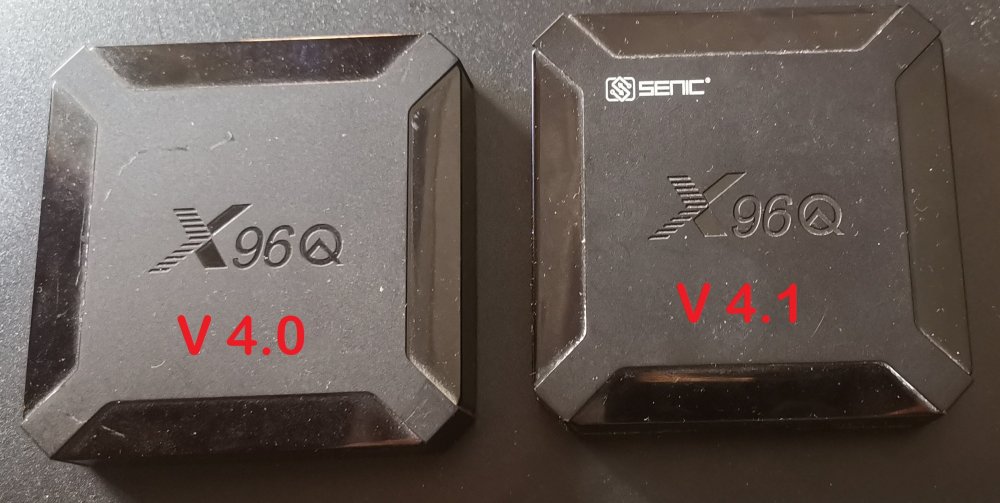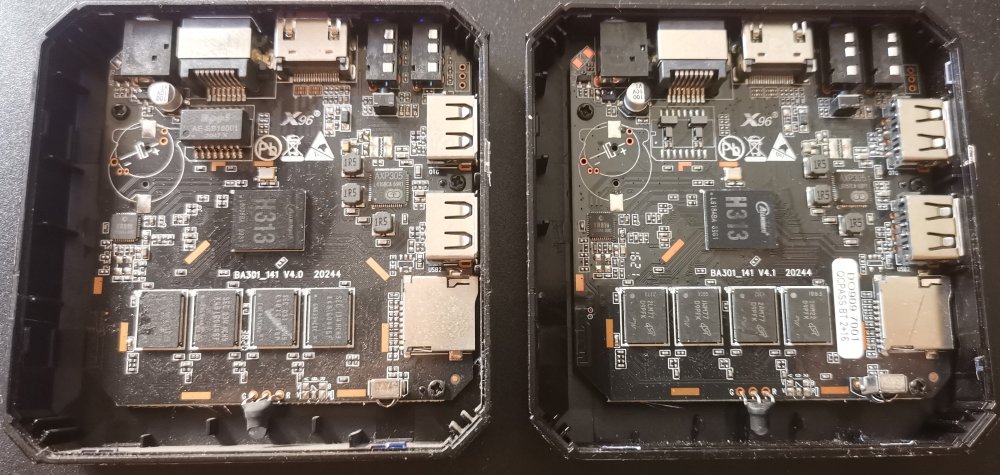All Activity
- Past hour
-
should be fixed with https://github.com/armbian/build/pull/8980
-
Good day all, After compiling a build for my TV box and burn it to the SD boot process stuck to Begin: Mounting root file system ... Begin: Running /scripts/local-top ... done. Begin: Running /scripts/local-premount ... Scanning for Btrfs filesystems Can someone help please solving the problem?
- Today
-
I switched to the Armbian version of Debian Triexie and now it's OK
-
I was just about to rebuild the source package, but today's upgrade delivered everything turnkey since my development team was faster and had done everything for me. The previously referenced description does provide a working result, but it does not use the most current available releases. This script runs the NPU with the latest working releases: #!/bin/bash WORKBENCH="." python3.11 -m venv ${WORKBENCH}/python/3.11 source ${WORKBENCH}/python/3.11/bin/activate pip install numpy==1.26.4 pip install pillow==12.0.0 pip install tflite-runtime==2.14.0 TEFLON_DEBUG=verbose ETNA_MESA_DEBUG=ml_dbgs python ${WORKBENCH}/classification.py \ -i ${WORKBENCH}/grace_hopper.bmp \ -m ${WORKBENCH}/mobilenet_v1_1_224_quant.tflite \ -l ${WORKBENCH}/labels_mobilenet_quant_v1_224.txt \ -e /usr/lib64/libteflon.so deactivate classification-3.11.log
-
I saw that the photos were deleted by mistake, so I added them back. Here is a photo of the two cases: Here is a photo of the motherboards of both cases: Here is a photo of the X96Q-Armbian-H313 V4.0 boot screen: Here is a photo of the X96Q-Armbian-H313 V4.1 boot screen:
-
Bad News: same issue with 25.11.1 / 6.12.58, and a few others... Worse News: The issue affects all rk3588's (Orange Pi 5/5B/5+, Rock 5A/5B/5C, etc.). Good News: PR is a permanent fix for all images, and also identifies an immediate workaround that only requires a reboot (add "overlays=panthor-gpu" to /boot/armbianEnv.txt). https://github.com/armbian/build/pull/8979
-
The mesa 25.3 is imported into Debian, but that version is currently blocked for migration from experimental to unstable by a policy issue. So it will not be available anytime soon in regular versions of Debian (Trixie/stable 25.0.x, Forky/testing 25.2.x, Sid/unstable 25.2.x). To run mesa 25.3 with Debian you'll have to install mesa using source-packages.
-
Strange. Well, I tested recently released v25.11.1 images https://www.armbian.com/nanopi-m4-v2/ and they boot (Noble Gnome). I won't be testing older images. (image upload still working in this moment - will take an hour or so to appear on /dl pages) @GuestWho
-
Hello, I'm from China. I bought an H96 Max M9S (8GB+128GB) for 500 RMB. After reading your discussions, I've learned how to use RKDevTool to flash the Android system via USB. However, I've been struggling for several days and still cannot boot the Armbian system. Could you please tell me how to boot Armbian? Is it possible to flash the Armbian system directly to the eMMC of my M9S using RKDevTool? I really need your help. Thank you very much!
-
I tested v25.11.1 https://www.armbian.com/orangepi-5/ released yesterday - vendor kernel, Gnome desktop, acceleration works, 4k video playing with Chromium, audio works ... Since I don't have model + right on hand, i didn't test it. But its very similar board and I assume it works. It should even boot with image for normal Opi 5 but all peripherals won't be working correctly.
-

Efforts to develop firmware for Lemfo HK1 RBOX K8S 4G/64G
leXia replied to Panda's topic in Rockchip CPU Boxes
I purchased the device after reading your thread and am currently porting it to my hardware with Copilot (Claude Sonnet 4.5). You can refer to my work results in the repository below. So far, the following parts have been confirmed to work: HDMI (no need to reconnect after Linux kernel boot) Ethernet Built-in eMMC Currently working on: Wi-Fi / Bluetooth (in my case, the model uses AIC8800D80) Not yet verified: GPU Install to eMMC As suggested in your thread, I based my work on the Hinlink HT2 and Radxa Rock 2F, using the DTB extracted from my device’s firmware and processing it with Copilot. I’d appreciate it if you could take a look if you’re interested. IMG_1597.HEIC https://github.com/wwwhana/armbian-build -
> if that minimal package were part of the stock system, so the armbian-install doesn't break did your system break following the f2fs-tools install or were you able to format with f2fs and install your system in armbian-config?
-
you can try: sudo systemctl status rpcbind if there are any problems or it's not enabled try: sudo systemctl enable rpcbind sudo systemctl start rpcbind
-
Tried to get it running on the Rock PI S, which has the same chip, but it somehow doesn't seem to work... I think it has different conflicts maybe? It's kinda hard to debug. Originally I used the following (on 24.*): /dts-v1/; /plugin/; / { compatible = "rockchip,rk3308"; fragment@0 { target = <&spi1>; __overlay__ { #address-cells = <1>; #size-cells = <0>; status = "okay"; spidev@0 { compatible = "rockchip,spidev"; status = "okay"; reg = <0>; spi-max-frequency = <10000000>; }; }; }; }; But it stopped working on upgrade to 25.11. I was able to get it to load again until I adjusted the compatible field to "armbian,spi-dev". But the the connected chip just wouldn't answer. I now tried rk3308-spi1-spidev.dts from this thread, with the codec modification and then even tried to fix the correct conflicts for the Rock PI S' different pinout: /dts-v1/; /plugin/; /{ metadata { title = "Enable spidev on SPI1"; compatible = "radxa,rockpis", "radxa,rock-s0"; category = "misc"; exclusive = "GPIO2_B1", "GPIO2_A4", "GPIO2_A5", "GPIO2_A7"; description = "Enable spidev on SPI1."; }; fragment@0 { target = <&spi1>; __overlay__ { status = "okay"; pinctrl-names = "default"; pinctrl-0 = <&spi1_clk &spi1_csn0 &spi1_miso &spi1_mosi>; #address-cells = <1>; #size-cells = <0>; spidev@0 { compatible = "rockchip,spidev", "armbian,spi-dev"; reg = <0>; spi-max-frequency = <10000000>; }; }; }; fragment@1 { target = <&i2c3>; __overlay__ { status = "disabled"; }; }; fragment@2 { target = <&uart3>; __overlay__ { status = "disabled"; }; }; }; But it still doesn't communicate. It's there, but not receiving any data from my chip like it did in the past. I can't find anything in dmesg, so I'm not sure how one can find out what's wrong with it.
- Yesterday
-
Hello people! I have a NAS on my local network. I want to use its NFS share in Armbian Just like I do with the Debian x86 desktop. (I want to say that the NAS is configured correctly). However, I had some problems with armbian. I followed the general NFS instructions for debian. but it didn't work. I followed the instructions for armbian. I created a directory for the mount point. I copied the fstab line from my desktop, where it is known to be correct and working properly. 192.168.xx.x:/d8/d8 /mnt/d8-nas nfs relatime,nfsvers=3 0 0 I've tried issuing commands from the command line. mount -vvvvv -t nfs -o vers=3 192.168.xx.x:/d8/d8 /mnt/d8-nas mount -vvvvv -t nfs -o vers=4 192.168.xx.x:/d8/d8 /mnt/d8-nas The result is nothing. What a mystery "No such device"? I have another rockchip 3228 box with an older armbian 23.11 kernel, and nfs doesn't work there either. And I tried some different builds of 24.5 24.11 25.5. I couldn't get the nfs client to work on any of them. Can you tell me how to solve this quest?
-
We don't have resources to deal with this question, but I think, in case of this hardware, there is just firmware package (armbian-firmware / linux-firmware) that fits into this. Perhaps some other util. There must be some scripts to scan Debian packages and tell? From my head, I remember iozon3 package (might not be by default on minimal) that is non-free https://packages.debian.org/bookworm/iozone3
-
Great reply , I'll knock up a connection! much easier than anything else. I work in modern/future vehicles so the spikes and dips are not an issue for me as none of them have engines.
-

Efforts to develop firmware for H96 MAX V56 RK3566 8G/64G
WINEDS replied to Hqnicolas's topic in Rockchip CPU Boxes
@Hqnicolas thanks for your presentation. I found I made an error : mkdir -p ./build/userpatches/kernel/archive/rockchip64-6.12 should be : mkdir -p ./userpatches/kernel/archive/rockchip64-6.12 as the current directory is build at that point. For wsl installation @NicoD made a great video here : -
rk3326 and rk3328 are not the same thing, neither is px30. Definitely no chances to run this on those SoCs; I don't know if there are images for boards using px30/rk3326 in armbian.
-
https://www.armbian.com/olimex-lime-2/ Does the image come with and install non free software on the computer? If so is there documentation showing how to do a fully free software installation of the Armbian_community_25.11.0-trunk.546_Lime2_trixie_current_6.12.58_minimal.img image? Free software is software you can use, share, modify and redistribute. Thank you.
-
I feed my ROCK5B-16GB with SATA brakeout on E-key and Samsung NVMe on M-key with 12V own soldered USB-C pigtail (from an old car battery in addition if mains power 12V brick is not there). It does not work with USB-C PD (the RPi5 27W nor an HP 45W ), then boot loop. I use the 5V and GND from 40-pin header for feeding the 5V of an 3.5 inch HDD (and it gets its 12V from the mentioned setup). Look at the ROCK5 schematics. It is not a RaspberryPi5 or OrangePi5. It has an own DC/DC stepdown convertor which can take 20V-9V on its USB-C power input connector and so creates an own stable 5V that is used for USB or in my case for some DIY 5V i need. You might dig deep into U-Boot and kernel and see if PD handling does work nowadays with latest, I didn't, I just soldered fixed 12V, much easier for me. Automotive can mean very high spikes and negative dips when engine start, so be aware to protect else your board might die sooner or later.
-

Efforts to develop firmware for H96 MAX V56 RK3566 8G/64G
Hqnicolas replied to Hqnicolas's topic in Rockchip CPU Boxes
Author: @WINEDS How to Build Armbian with Maxio Ethernet Support for H96 V56 (2025 Model) If you own the H96 V56 (2025 model) TV box and want to run Armbian with full Gigabit Ethernet support, you might have noticed that the stock kernel doesn't always support the Maxio Ethernet chip out of the box. In this guide, we’ll walk through the most accessible method to build a custom Armbian image with the necessary kernel modules using Windows Subsystem for Linux (WSL). Refer to https://docs.armbian.com/Developer-Guide_Build-Preparation/ and note hardware requirements then in a Windows Powershell console select Ubuntu (using down arrow in title bar) and type to update the system: sudo apt update sudo apt upgrade Prerequisites A Windows PC with WSL (Ubuntu) installed. The specific patch file (my_v2_patch.patch) and DTB file (my_board_df.dtb) mentioned in the documentation. Patience (the build process can take a few hours). Step 1: Prepare Your Environment First, ensure your WSL instance has enough resources. Go to your WSL settings (typically via a .wslconfig file or the settings menu) and allocate about 75% of your CPU cores and RAM to ensure the build doesn't crash. Open your Ubuntu terminal in Windows PowerShell and update your system: sudo apt update sudo apt upgrade Step 2: Get the Armbian Build System Clone the official Armbian build repository and enter the directory: git clone [https://github.com/armbian/build](https://github.com/armbian/build) cd build Step 3: Apply the Kernel Patch You need to patch the kernel to support the specific hardware. Create the directory tree for the patch: mkdir -p ./build/userpatches/kernel/archive/rockchip64-6.12 Using Windows File Explorer, copy your my_v2_patch.patch file into this newly created directory (rockchip64-6.12). Step 4: Run the Build Command Now, kick off the compilation process. We will build a Gnome desktop image based on the Noble release. Run the following command (copy and paste this as one line): ./compile.sh build BOARD=h96-tvbox-3566 BRANCH=current BUILD_DESKTOP=yes BUILD_MINIMAL=no DESKTOP_APPGROUPS_SELECTED=browsers DESKTOP_ENVIRONMENT=gnome DESKTOP_ENVIRONMENT_CONFIG_NAME=config_base KERNEL_CONFIGURE=yes RELEASE=noble Step 5: Configure the Kernel (Crucial Step) After the build runs for a while, the blue Kernel Configuration menu will appear. This is where you enable the Ethernet driver. Use the arrow keys to navigate to Device Drivers. Select Network device support. Select PHY Device support and Infrastructure. Scroll down to find MAXIO PHYs. Press the Space bar until you see an <M> next to it (this modularizes the feature). Once selected, use the Tab key to select Exit and keep selecting Exit until you leave the configuration menu. Select "Yes" when asked to save the kernel configuration. Step 6: Retrieve Your Image The build will continue (potentially for a few hours). Once finished, your new image file will be located in: output/images Step 7: Post-Installation Setup Flash the image to your SD card/eMMC and boot the device. To get the Ethernet working, you need to update the Device Tree Blob (DTB). Copy the file my_board_df.dtb to /boot/dtb/rockchip/ on the device. Edit the boot environment file: sudo nano /boot/armbianEnv.txt Change the fdtfile line to point to your new DTB: fdtfile=rockchip/my_board_df.dtb Press Ctrl+X, then Y to save. Reboot your H96 V56, and you should now enjoy full Gigabit Ethernet speeds! my_board_df.dtb -

fail install of xfce desktop on odroidxu4
eselarm replied to dev001's topic in Software, Applications, Userspace
For SBCs without own audio I use networked pulseaudio. I never got it to work in newly installed Jammy and Bookworm, also not in Bookworm upgraded in-place to Trixie. It worked in Buster, BuIlseye and allways worked in Opensuse Tumbleweed. I already had all pipewire user sockets and services disabled and pulseaudio enabled, also de-installed pipewire-pulse as that one is the problem I believe (but is more than a year ago I looked at it). Now it turns out that doing 'pactl load-module module-zeroconf-discover' did add remote audio sinks. GUI based paprefs in Ubuntu/Debian should do it, but that is all grey since years, cannot be selected nor changed. So NanoPi-R6C with Armbian Trixie edge kernel now also plays audio via Armbian Trixie NanoPi-NEO SPDIF enabled with long simple wiring to an amplifier that takes coaxial SPDIF as input. I also had it working analog, but way too much issues with noise etc. 'the long simple wiring' is 1 lead of a low-quality twin analog audio cable, shielding=GND, core=signal.













